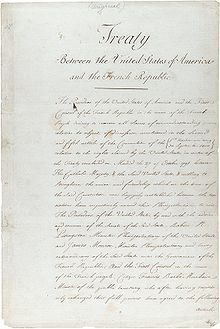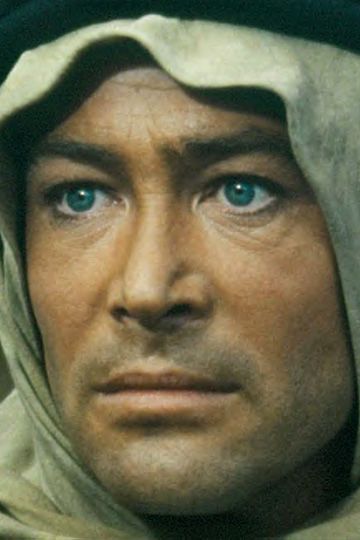Cross posted from The Stars Hollow Gazette
The United States and New Zealand are currently the only countries in the world where the pharmaceutical industry is allowed to market and advertise prescription drugs. Direct to consumer advertising is one of two industry practices that have some under fire recently. The other is paying doctors to promote drugs.
One of the biggest market for drugs have been parents concerned about their children’s success in school. Attention Deficit Hyperactivity Disorder (ADHD) is now “the second most frequent long-term diagnosis made in children, narrowly trailing asthma, according to a New York Times analysis of C.D.C. data.”
The Selling of Attention Deficit Disorder
By Alan Schwarz, New York Times
The Number of Diagnoses Soared Amid a 20-Year Drug Marketing Campaign
After more than 50 years leading the fight to legitimize attention deficit hyperactivity disorder, Keith Conners could be celebrating.
Severely hyperactive and impulsive children, once shunned as bad seeds, are now recognized as having a real neurological problem. Doctors and parents have largely accepted drugs like Adderall and Concerta to temper the traits of classic A.D.H.D., helping youngsters succeed in school and beyond.
But Dr. Conners did not feel triumphant this fall as he addressed a group of fellow A.D.H.D. specialists in Washington. He noted that recent data from the Centers for Disease Control and Prevention show that the diagnosis had been made in 15 percent of high school-age children, and that the number of children on medication for the disorder had soared to 3.5 million from 600,000 in 1990. He questioned the rising rates of diagnosis and called them “a national disaster of dangerous proportions.”
“The numbers make it look like an epidemic. Well, it’s not. It’s preposterous,” Dr. Conners, a psychologist and professor emeritus at Duke University, said in a subsequent interview. “This is a concoction to justify the giving out of medication at unprecedented and unjustifiable levels.”
The rise of A.D.H.D. diagnoses and prescriptions for stimulants over the years coincided with a remarkably successful two-decade campaign by pharmaceutical companies to publicize the syndrome and promote the pills to doctors, educators and parents. With the children’s market booming, the industry is now employing similar marketing techniques as it focuses on adult A.D.H.D., which could become even more profitable. [..]
Like most psychiatric conditions, A.D.H.D. has no definitive test, and most experts in the field agree that its symptoms are open to interpretation by patients, parents and doctors. The American Psychiatric Association, which receives significant financing from drug companies, has gradually loosened the official criteria for the disorder to include common childhood behavior like “makes careless mistakes” or “often has difficulty waiting his or her turn.”
The idea that a pill might ease troubles and tension has proved seductive to worried parents, rushed doctors and others.
The Selling of ADHD: Diagnoses, Prescriptions Soar After 20-Year Marketing Effort by Big Pharma
Taken at face value, the latest figures on attention deficit hyperactivity disorder (ADHD) suggest a growing epidemic in the United States. According to the Centers for Disease Control, 15 percent of high school children are diagnosed with ADHD. The number of those on stimulant medication is at 3.5 million, up from 600,000 two decades ago. ADHD is now the second most common long-term diagnosis in children, narrowly trailing asthma.
But a new report in The New York Times questions whether these staggering figures reflect a medical reality or an over-medicated craze that has earned billions in profits for the pharmaceutical companies involved. Sales for ADHD drugs like Adderall and Concerta topped $9 billion in the United States last year, a more than 500 percent jump from a decade before. The radical spike in diagnoses has coincided with a 20-year marketing effort to promote stimulant prescriptions for children struggling in school, as well as for adults seeking to take control of their lives. The marketing effort has relied on studies and testimonials from a select group of doctors who have received massive speaking fees and funding grants from major pharmaceutical companies.
We are joined by four guests: Alan Schwarz, an award-winning reporter who wrote the New York Times piece, “The Selling of Attention Deficit Disorder”; Jamison Monroe, a former teenage Adderall addict who now runs Newport Academy, a treatment center for teens suffering from substance abuse and mental health issues; Dr. Gabor Maté, a physician and best-selling author of four books, including “Scattered: How Attention Deficit Disorder Originates and What You Can Do About It”; and John Edwards, the father of a college student who committed suicide after he was prescribed Adderall and antidepressant medications at the Harvard University Health Services clinic.
One drug company, GlaxoSmithKline, a British owned company, has decided to stop paying doctors to promote their prescription drugs:
Andrew Witty, Glaxo’s chief executive, said in a telephone interview Monday that its proposed changes were unrelated to the investigation in China, and were part of a yearslong effort “to try and make sure we stay in step with how the world is changing,” he said. “We keep asking ourselves, are there different ways, more effective ways of operating than perhaps the ways we as an industry have been operating over the last 30, 40 years?”
For decades, pharmaceutical companies have paid doctors to speak on their behalf at conferences and other meetings of medical professionals, on the assumption that the doctors are most likely to value the advice of trusted peers.
But the practice has also been criticized by those who question whether it unduly influences the information doctors give each other and can lead them to prescribe drugs inappropriately to patients. All such payments by pharmaceutical companies are to be made public next year under requirements of the Obama administration’s health care law.
Under the plan, which Glaxo said would be completed worldwide by 2016, the company will no longer pay health care professionals to speak on its behalf about its products or the diseases they treat “to audiences who can prescribe or influence prescribing,” it said in a statement. It will also stop providing financial support directly to doctors to attend medical conferences, a practice that is prohibited in the United States through an industry-imposed ethics code but that still occurs in other countries. In China, the authorities have said Glaxo compensated doctors for travel to conferences and lectures that never took place.
Mr. Witty declined to comment on the investigation because he said it was still underway.



 In April 1803, the United States purchased from France the 828,000 square miles that had formerly been French Louisiana. The area was divided into two territories: the northern half was Louisiana Territory, the largely unsettled (though home to many Indians) frontier section that was later explored by Lewis and Clark; and the southern Orleans Territory, which was populated by Europeans.
In April 1803, the United States purchased from France the 828,000 square miles that had formerly been French Louisiana. The area was divided into two territories: the northern half was Louisiana Territory, the largely unsettled (though home to many Indians) frontier section that was later explored by Lewis and Clark; and the southern Orleans Territory, which was populated by Europeans.
 When these phrases appeared in the pages of the Pennsylvania Journal for the first time, General George Washington’s troops were encamped at McKonkey’s Ferry on the Delaware River opposite Trenton, New Jersey. In August, they had suffered humiliating defeats and lost New York City to British troops. Between September and December, 11,000 American volunteers gave up the fight and returned to their families. General Washington could foresee the destiny of a rebellion without an army if the rest of his men returned home when their service contracts expired on December 31. He knew that without an upswing in morale and a significant victory, the American Revolution would come to a swift and humiliating end.
When these phrases appeared in the pages of the Pennsylvania Journal for the first time, General George Washington’s troops were encamped at McKonkey’s Ferry on the Delaware River opposite Trenton, New Jersey. In August, they had suffered humiliating defeats and lost New York City to British troops. Between September and December, 11,000 American volunteers gave up the fight and returned to their families. General Washington could foresee the destiny of a rebellion without an army if the rest of his men returned home when their service contracts expired on December 31. He knew that without an upswing in morale and a significant victory, the American Revolution would come to a swift and humiliating end. On this day in 1918, the House of Representatives passed the
On this day in 1918, the House of Representatives passed the 
 Peter Seamus Lorcan O’Toole, an Irish bookmaker’s son with a hell-raising streak whose magnetic performance in the 1962 epic film “Lawrence of Arabia” earned him overnight fame and put him on the road to becoming one of his generation’s most accomplished and charismatic actors, died on Saturday in London. He was 81.
Peter Seamus Lorcan O’Toole, an Irish bookmaker’s son with a hell-raising streak whose magnetic performance in the 1962 epic film “Lawrence of Arabia” earned him overnight fame and put him on the road to becoming one of his generation’s most accomplished and charismatic actors, died on Saturday in London. He was 81. 